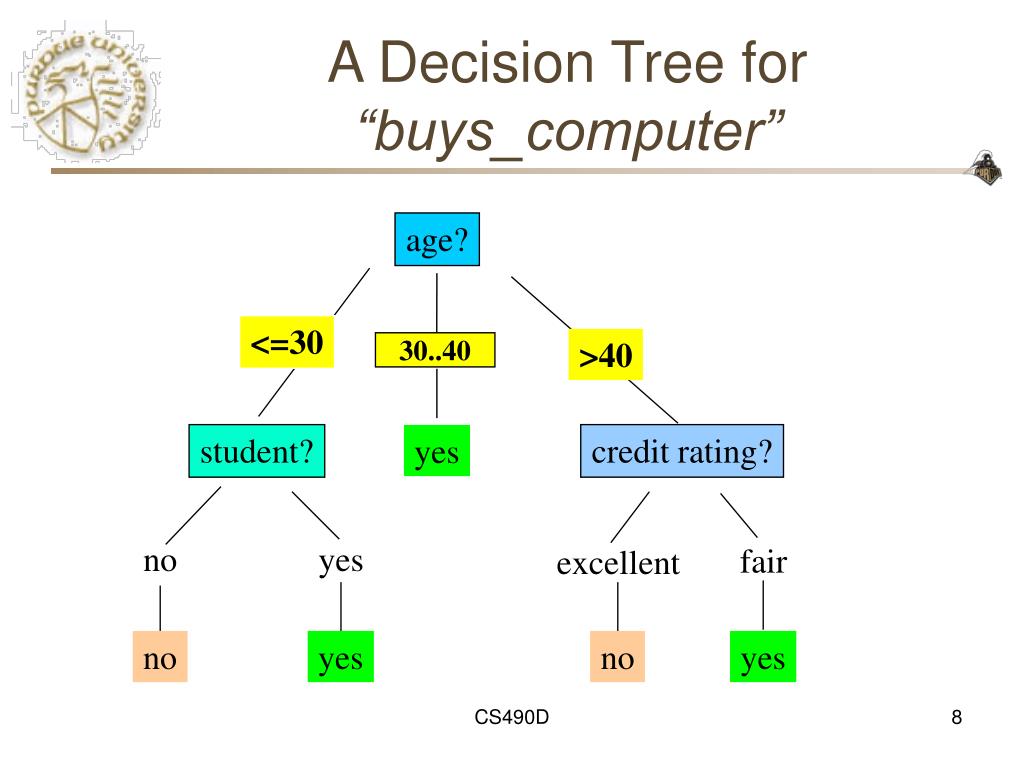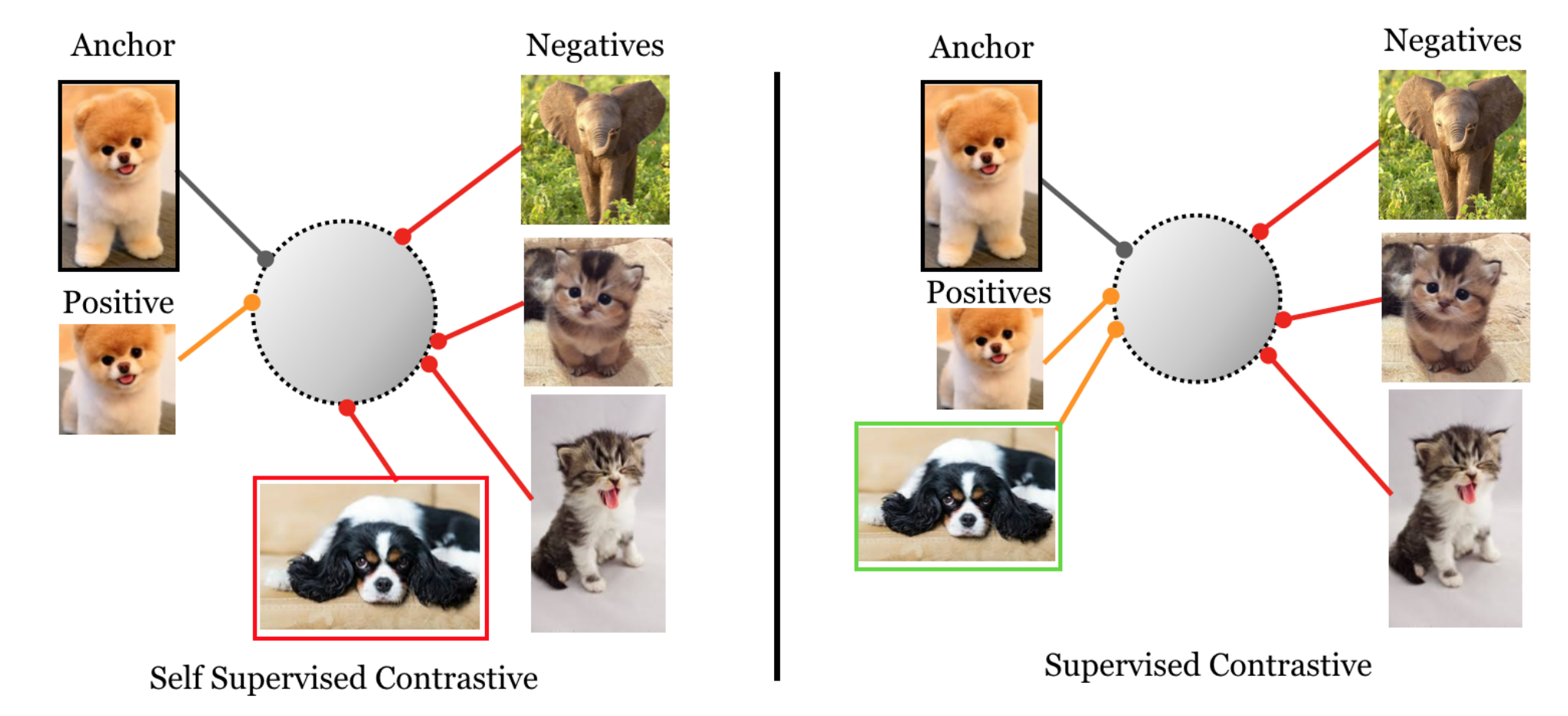39 in supervised learning class labels of the training samples are known
Lecture 1: Supervised Learning - Cornell University Let us formalize the supervised machine learning setup. Our training data comes in pairs of inputs ( x, y), where x ∈ R d is the input instance and y its label. The entire training data is denoted as D = { ( x 1, y 1), …, ( x n, y n) } ⊆ R d × C where: R d is the d-dimensional feature space x i is the input vector of the i t h sample Basics of Supervised Learning (Classification) | by Tarun Gupta ... They are namely Learning and Querying phase. The learning phase consists of two components of namely Induction (training) and Deduction (testing). The querying phase is also known as application phase. Let's talk about it in a more formal way now. Formal definition: Improve over task T, with respect to performance measure P, based on experience E.
Supervised learning - Wikipedia Supervised learning (SL) is the machine learning task of learning a function that maps an input to an output based on example input-output pairs. It infers a function from labeled training data consisting of a set of training examples . [2]

In supervised learning class labels of the training samples are known
Semi-Supervised Learning With Label Propagation Semi-supervised learning refers to algorithms that attempt to make use of both labeled and unlabeled training data. Semi-supervised learning algorithms are unlike supervised learning algorithms that are only able to learn from labeled training data. A popular approach to semi-supervised learning is to create a graph that connects examples in the training dataset and … Unstructured Data Classification.txt - In Supervised learning, class ... in supervised learning, class labels of the training samples are known select pre-processing techniques from the options all the options a classifer that can compute using numeric as well as categorical values is random forest classifier classification where each data is mapped to more than one class is called multi-class classification tf-idf is … Types Of Machine Learning: Supervised Vs Unsupervised Learning Supervised learning is learning with the help of labeled data. The ML algorithms are fed with a training dataset in which for every input data the output is known, to predict future outcomes. This model is highly accurate and fast, but it requires high expertise and time to build. Also, these models require rebuilding if the data changes.
In supervised learning class labels of the training samples are known. 1.17. Neural network models (supervised) - scikit-learn A threshold, set to 0.5, would assign samples of outputs larger or equal 0.5 to the positive class, and the rest to the negative class. If there are more than two classes, \(f(x)\) itself would be a vector of size (n_classes,). Instead of passing through logistic function, it passes through the softmax function, which is written as, An Introduction to Supervised Learning | by James Andrew Godwin ... That is the most important thing — supervised learning has something that is called an expert label. That's a fancy word for meaning that it is labeled for an outcome; or for any given case, there is a known, desired outcome. Unsupervised learning (clustering) does not assume that it knows the answer. Types of Learning - tutorialspoint.com Supervised learning deals with learning a function from available training data. Here, a learning algorithm analyzes the training data and produces a derived function that can be used for mapping new examples. There are many supervised learning algorithms such as Logistic ... Semi-supervised Learning. If some learning samples are labeled, ... 120 questions with answers in SUPERVISED LEARNING | Science topic Dear N. Janardhan. Supervised learning is a machine learning method distinguished by the use of labelled datasets. The datasets are intended to train or "supervise" computers in properly ...
Supervised and Unsupervised learning - GeeksforGeeks Supervised learning, as the name indicates, has the presence of a supervisor as a teacher. Basically supervised learning is when we teach or train the machine using data that is well labelled. Which means some data is already tagged with the correct answer. The Beginner’s Guide to Contrastive Learning - V7Labs For supervised learning, the contrastive loss shown above is incapable of handling the case where, due to the presence of labels, more than one sample is known to belong to the same class. Generalization to an arbitrary number of positives leads to a choice between multiple possible functions. In supervised learning, class labels of the training samples are ... Expert-verified answer scouteo In supervised learning, class labels of the training samples are "known." The correct answer is "known." The other options for the question were "unknown," "partially known," and "doesn't matter." It cannot be "unknown," because training samples must be known. ML | Types of Learning - Supervised Learning - GeeksforGeeks Supervised learning is when the model is getting trained on a labelled dataset. A labelled dataset is one that has both input and output parameters. In this type of learning both training and validation, datasets are labelled as shown in the figures below. Both the above figures have labelled data set as follows:
Chapter 5 Supervised Learning | An Introduction to Machine Learning with R 5.1 Introduction. In supervised learning (SML), the learning algorithm is presented with labelled example inputs, where the labels indicate the desired output. SML itself is composed of classification, where the output is qualitative, and regression, where the output is quantitative.. When two sets of labels, or classes, are available, one speaks of binary classification. Edward - Supervised Learning (Classification) Supervised Learning (Classification) In supervised learning, the task is to infer hidden structure from labeled data, comprised of training examples \ { (x_n, y_n)\} {(xn,yn)}. Classification means the output y y takes discrete values. We demonstrate with an example in Edward. An interactive version with Jupyter notebook is available here. Supervised Machine Learning: What is, Algorithms with Examples - Guru99 Supervised Machine Learning is an algorithm that learns from labeled training data to help you predict outcomes for unforeseen data. In Supervised learning, you train the machine using data that is well "labeled." It means some data is already tagged with correct answers. It can be compared to learning in the presence of a supervisor or a teacher. Supervised and Unsupervised learning - Dataaspirant Supervised learning is a data mining task of inferring a function from labeled training data .The training data consist of a set of training examples. In supervised learning, each example is a pair consisting of an input object (typically a vector) and the desired output value (also called the supervisory signal ).
PDF Supervised Learning: Classificaon - fenyolab.org • The known label of test sample is compared with the classified result from the model • Accuracy rate is the percentage of test set samples that are correctly classified by the model • Test set is independent of training set (otherwise over-fing) • If the accuracy is acceptable, use the model to classify new data
What is Supervised Learning? | IBM What is supervised learning? Supervised learning, also known as supervised machine learning, is a subcategory of machine learning and artificial intelligence. It is defined by its use of labeled datasets to train algorithms that to classify data or predict outcomes accurately.
How to Implement a Semi-Supervised GAN (SGAN) From Scratch … 01-09-2020 · Semi-supervised learning is the challenging problem of training a classifier in a dataset that contains a small number of labeled examples and a much larger number of unlabeled examples. The Generative Adversarial Network, or GAN, is an architecture that makes effective use of large, unlabeled datasets to train an image generator model via an image […]
Learning with not Enough Data Part 1: Semi-Supervised ... Dec 05, 2021 · When facing a limited amount of labeled data for supervised learning tasks, four approaches are commonly discussed. Pre-training + fine-tuning: Pre-train a powerful task-agnostic model on a large unsupervised data corpus, e.g. pre-training LMs on free text, or pre-training vision models on unlabelled images via self-supervised learning, and then fine-tune it on the downstream task with a small ...
Mutual consistency learning for semi-supervised medical image ... Dice performance of each class on the ACDC dataset, obtained by a fully supervised U-Net model and our semi-supervised MC-Net+ model, with 10% (a) and 20% (b) labeled data for training. Overall, based on the results on three datasets, our MC-Net+ model shows superior performance than other SOTA methods for semi-supervised medical image ...
An in-depth guide to supervised machine learning classification Supervised Learning. In supervised learning, algorithms learn from labeled data. After understanding the data, the algorithm determines which label should be given to new data by associating patterns to the unlabeled new data. Supervised learning can be divided into two categories: classification and regression.
Supervised learning - Wikipedia A first issue is the tradeoff between bias and variance. Imagine that we have available several different, but equally good, training data sets. A learning algorithm is biased for a particular input if, when trained on each of these data sets, it is systematically incorrect when predicting the correct output for .A learning algorithm has high variance for a particular input if it predicts ...
1 A Survey on Deep Semi-supervised Learning - arXiv learning setting. Transductive learning assumes that the unlabeled samples in the training process are exactly the data to be predicted, and the purpose of the transductive learning is to generalize over these unlabeled samples, while inductive learning supposes that the learned semi-supervised classifier will be still applicable to new unseen ...




.png)

Post a Comment for "39 in supervised learning class labels of the training samples are known"